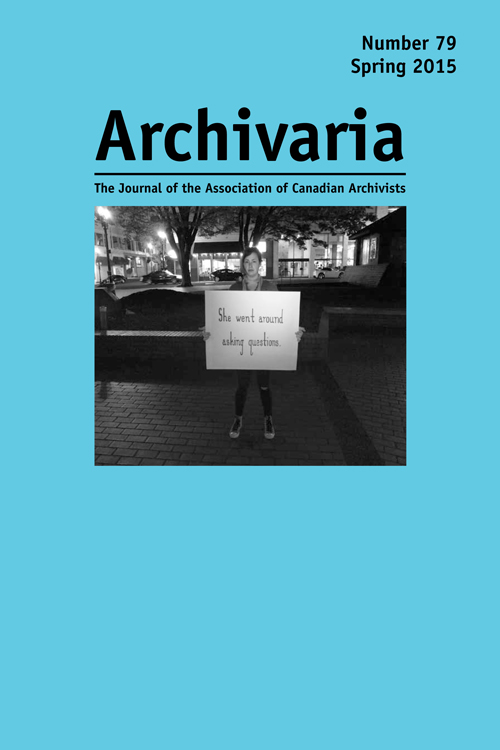The Pillow Book of Chris Marker: The Arrangement and Description of Personal Archives
Abstract
This article explores how an archivist dealing with the personal archives of an artist might be informed by that artist’s work in arranging and describing the fonds. Chris Marker, the French multimedia artist who left his archives to the Cinémathèque française in Paris, is the starting point and thread of this discussion. Through a review of archival literature, the author draws upon issues common to the arrangement and description of personal archives, and creates linkages between these issues and Marker’s own work, specifically his film Sans soleil, and Sei Shonagon’s The Pillow Book, one of the literary references in the film. By speculating about how an archivist would attempt to deal with the “ordered clutter” of Marker’s archives through research, observation, and archival methodology, the author explores key questions surrounding provenance, original order, and arrangement and description in the digital realm. Also considered are the various roles an archivist must take on in order to make personal archives available for future research.
RÉSUMÉ
Cet article examine comment un archiviste qui s’occupe des archives personnelles d’un artiste peut acquérir une profonde connaissance de l’oeuvre de cet artiste en classant et en décrivant son fonds d’archives. Chris Marker, l’artiste multimédia français qui a laissé ses archives à la Cinémathèque française à Paris, sert de point de départ et de fil directeur à cette discussion. À partir d’une recension des écrits en archivistique, l’auteur s’inspire des enjeux communs aux processus de classement et de description des archives personnelles, et créé des liens entre ces enjeux et l’oeuvre même de Marker, en particulier son film Sans soleil, et The Pillow Book de Sei Shonagon, l’une des références littéraires dans ce film. En spéculant sur les façons dont un archiviste peut tenter de gérer « le désordre ordonné » des archives de Marker, par l’entremise de la recherche, de l’observation et de la méthodologie archivistique, l’auteur explore des questions clés portant sur la provenance, l’ordre originel, et le classement et la description à l’ère du numérique. Il considère aussi les divers rôles que l’archiviste doit jouer afin de rendre les archives personnelles disponibles à des fins de recherche future.
Authors of manuscripts accepted for publication retain copyright in their work. They are required to sign the Agreement on Authors' Rights and Responsibilities that permits Archivaria to publish and disseminate the work in print and electronically. In the same agreement, authors are required to confirm that "the material submitted for publication in Archivaria, both in its paper and electronic versions, including reproductions of other works (e.g. photographs, maps, etc.) does not infringe upon any existing copyright." Authors of manuscripts accepted for publication retain copyright in their work and are able to publish their articles in institutional repositories or elsewhere as long as the piece is posted after its original appearance on archivaria.ca. Any reproduction within one year following the date of this agreement requires the permission of the General Editor.





